Excerpts from Jim Conrad's
Naturalist Newsletter
from the January 10, 2016 Newsletter issued from Hacienda Chichen Resort beside Chichén Itzá Ruins, central Yucatán, MÉXICO
AN ENDEMIC PERSIMMON
After months of soggy, humid rainy season suddenly it's the dry season and the vegetation reflects it. The most tender herbs already are dried up and brown, and many deciduous trees and shrubs are losing their leaves. The woods takes on a more open, airy aspect, and things are noticed that earlier might have been overlooked. That's the way it was when this week a small understory tree drew attention to itself with its small, reddish-orange, mothball-size fruits, shown below:

I'd never noticed this species before but at first glance I knew it was a kind of persimmon. It's shaped like a persimmon, its fruit skin is smooth and shiny like a persimmon's, the fruit's top bears a small prickle-like projection like a persimmon fruit and, more than anything, below the fruit the sepals have enlarged, becoming leathery and conspicuous, which is the most distinctive feature of a persimmon fruit. Below, you can get a better view of the sepals -- and notice how airy the woods behind it has become:
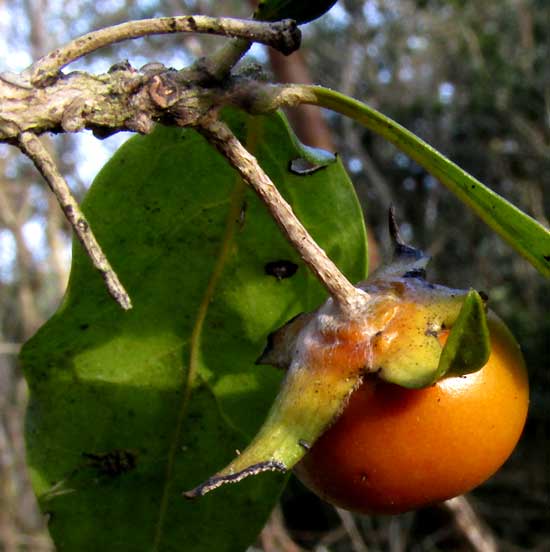
Compared to other persimmon species in our area this one is distinguished by its long, pointed sepals and by the elongated, woody stem, or peduncle, connecting the fruit with the stem. Breaking open a fruit -- which technically is a berry-type fruit, meaning that it is pulpy, doesn't split open when it's mature, and bears more than one seed, so that tomatoes also, technically, are berries, but strawberries aren't -- it contains large, hard seeds, usually four or so, as shown below:

The fruit's pulp tastes OK but it's not nearly as sweet and rich-tasting as the ones I've eaten in abundance in the eastern US, plus there's not much pulp between the big seeds, so most folks don't bother to eat them. During my visit, though, a flock of Yucatan Jays orbited around me squawking as if they relished them.
Below, you can see the tree's pale, smooth, blotchy bark:
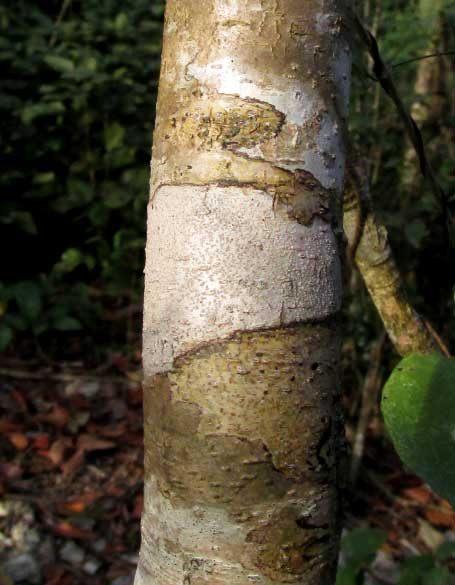
This is DIOSPYROS ANISANDRA, endemic to just the Yucatan Peninsula, Belize and northern Guatemala. It's always a treat to meet a new tree species, and coming upon one restricted to just one small part of the world is especially a pleasure. It has no English name, but a Maya name for it is Kakalche.
The species is well represented on the Internet because of its potential medicinal value. In a 2007 issue of the journal Fitoterapia, Rocio Borges-Argáez and others at our own CICY (Center for Scientific Study of Yucatán, in Mérida), published an article entitled "Antimicrobial activity of Diospyros anisandra." That work reported on the effects of extracts of leaves, root and stem bark against two strains of tuberculosis bacteria -- one strain having developed a resistance to currently used antibiotics. They found that extracts "showed significant inhibitory activity against both strains."
from the August 9, 2018 Newsletter issued from Rancho Regenesis in the woods ±4kms west of Ek Balam Ruins; elevation ~40m (~130 ft), N~20.876°, W~88.170°; central Yucatán, MÉXICO
FALLING PERSIMMON FLOWERS
As I read beside the deep pit next to the hut's porch, a tiny flower from a tree above bounced off my head and tumbled onto my lap. Then I noticed that the ground all around me was littered with many such fallen blossoms. Ants were carrying away some of them, so the flowers must still have contained a little nectar, or maybe the ants were feeding on the corollas' flesh. At first I could see no flowers in the tree above me, but eventually a few small, inconspicuous clusters turned up on a few branches of a persimmon tree, Diospyros anisandra. A typical flower cluster on my flower-dropping tree is shown below:
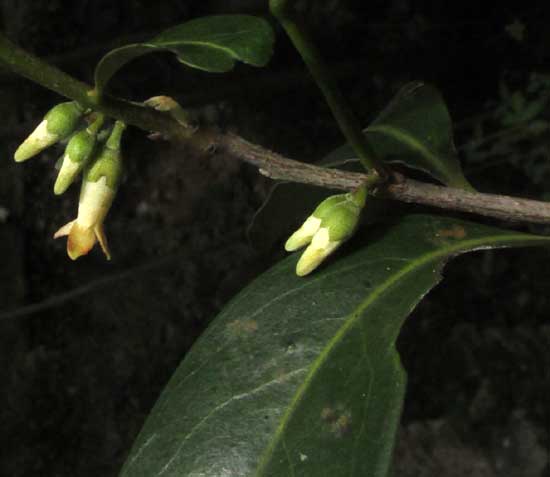
A close-up of a flower appears below:
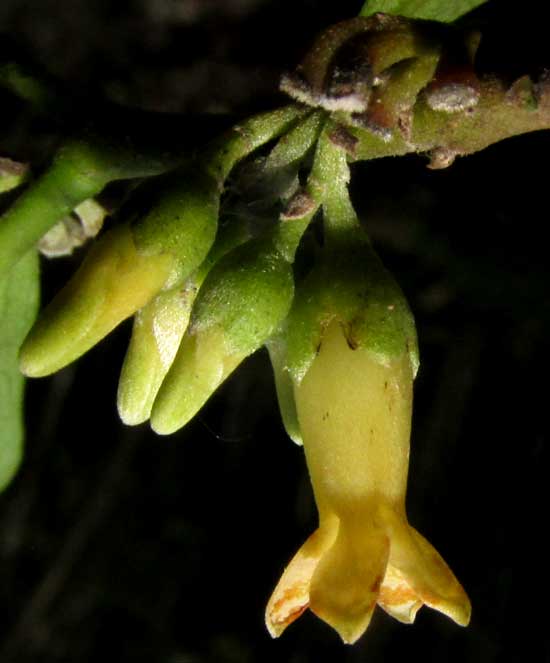
Persimmons belong to the Ebony Family, the Ebonaceae, in which either individual plants produce either all-male or all-female flowers (plants are "dioecious"), or else a mixture of unisexual flowers and flowers with both male and female parts (hermaphrodite flowers). Breaking open the blossom that fell on my head, I found only male parts, as shown below:
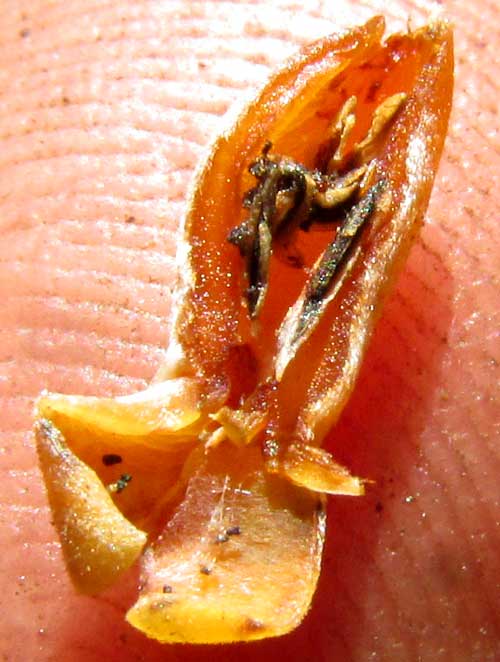
The brown, banana-shaped items are old anthers from which pollen has been shed. On a nearby female tree on which I've seen fruits, I couldn't find female flowers, though I bet they were there.